
This Lesser Golden Plover was recorded in Fort Worth, Texas on April 5, 2004. Although I
only got one distant call recorded, it was actually calling frequently
prior to this - maybe 30 - 40 times. every call it made was similar:-
a sharp, lowish-pitched "ch-WEE", and very different
to the dominica with it that gave the typical "CHE-ul-eee"
or "CHE-eee" type call:
Clip A is the unedited call, stright from my video clip: plover1.wav
Clip B is the same call, amplified to four times the volume: plover1a.wav
Clip C is a string of four copies of the call:- the first unedited;
the second at twice the volume; the third at four times the volume;
the fourth at six times the volume (distortion increase with each
amplification): plover1b.wav
For comparison here is the call of a male P. dominica from
Manitoba: dominicax.wav
- and here is the call of a P. fulva from Siberia: fulvax.wav
Update, April 10:
Here's a video clip of
the bird, which starts with it being in front of a dominica; although
hard to tell from this poor footage, the dominica was clearly
larger and "colder" than the target plover - but this
may have been in part due to a more-advance stage of molt.
Here's a second clip
of the bird along, which includes the faint call used in the analyses
here - it calls when facing directly away from the camera!
And here's a shorter clip
of just the segment wher it calls.
Thanks to Keith Bartels, I can provide a slightly clearer version
of the original plover recording: plover1bpf.wav
- plus a louder version: plover1bpf2.wav
NOTE: my recording was made
as the audio track of a Fuji Digital still camera set to video
mode (my only means of making a sound recording at the time!)
Hardly the best equipment, plus the bird was facing directly away
from the camera when it made this call, so it is a bit muted and "wimpy" compared to what I had been hearing from the
bird.
Also, Keith kindly provided spectrographs with the following commentary:-
"Figure 1: Plover1.wav spectrogram of the raw data. Sample
rate was 22000 Hz. Note the aliasing effect in the data. This
data was obviously sampled at 8000Hz and stored at 22000. Note
the mirror image of the data around the 400 and 8000 Hz frequencies.
This is purely artifact and not characteristics of the vocalization.
Proof is in the fact that the noise is mirror imaged too
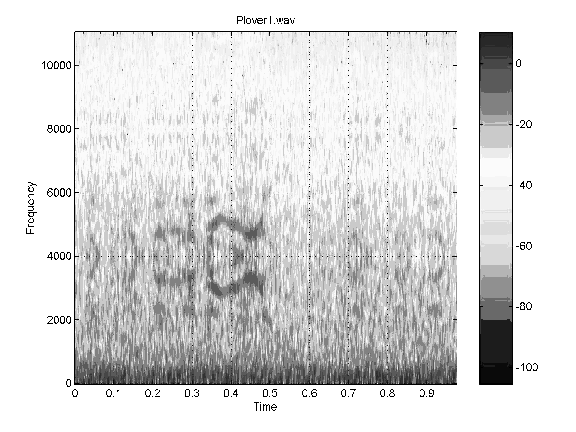
Figure 2 I created a bandpass filter to filter out frequencies
above 4000 Hz and below 500 Hz. Below 500 Hz was a lot of noise
as seen in Figure 1. I saved this filtered data to plover1bpf.wav
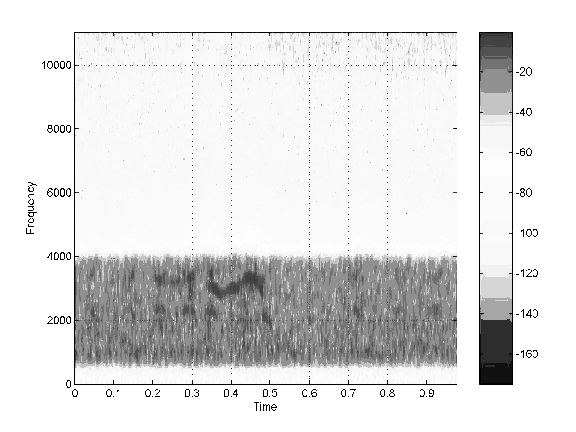
Figure 3 Spectrogram of the dominicax.wav file. Sampling rate
here was 44000Hz and it was clear that proper anti-aliasing filters
were used to record the data. I adjusted the frequency axis to
be the same as that in Figure 1."
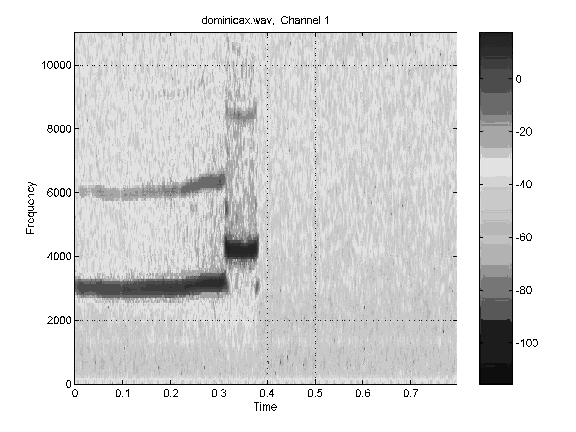
Also Keith provided a large spectrograph of a clip from Siberia
(recorded by Krister Mild) containing numerous fulva calls (with
the gaps much reduced to save file size) here is this graph cut
into five segments, with my plover graph intermixed for comparison:
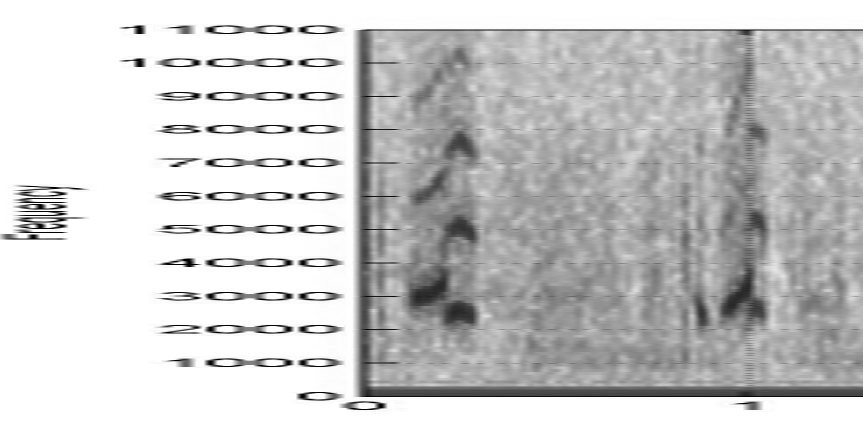

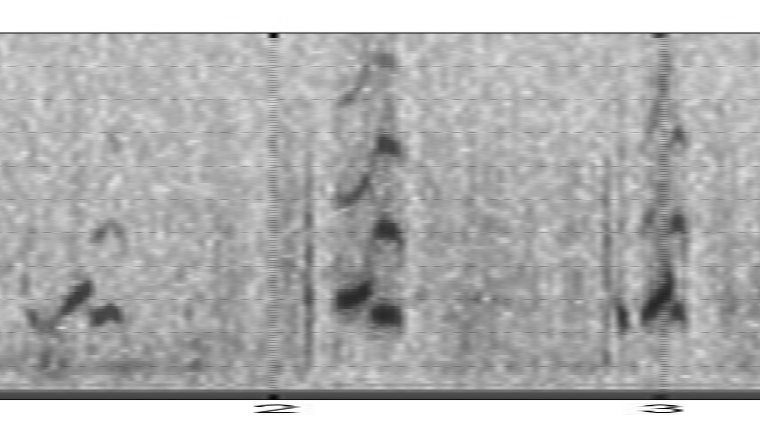

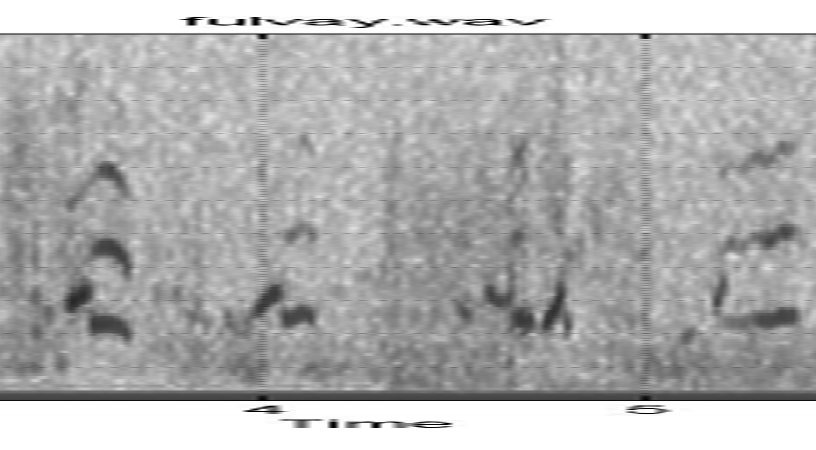

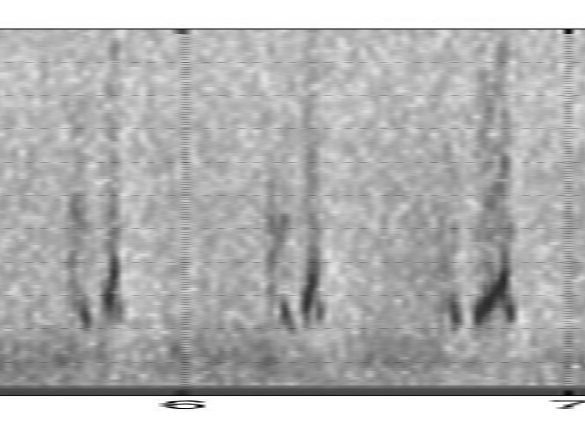

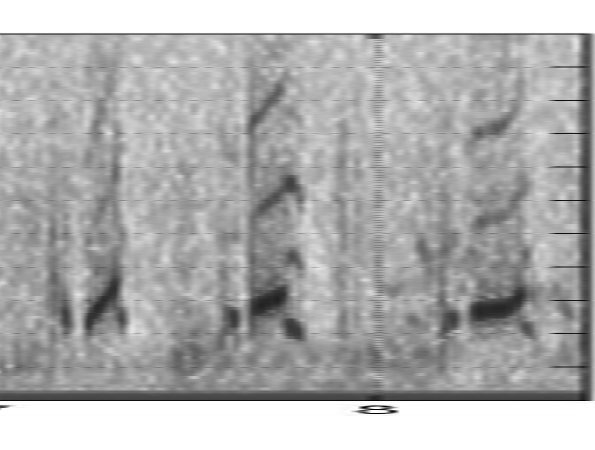
There is a note in British Birds, Volume 83, No. 2 (Feb. 1990)
By Per Alstrom on the calls of American and Pacific Golden Plovers.
To summarise, Per has listened to many fulvas from various
locations, plus dominicas, (both on recordings and in the
field) nnd conlcudes that "the calls of dominica and
fulva generally are seperable" (a conclusion arrived
at independently by Lars Jonsson, Per states.) The following image
is a table of spectrographs included with the note:- six fulva
(top) plus two dominica (bottom.)
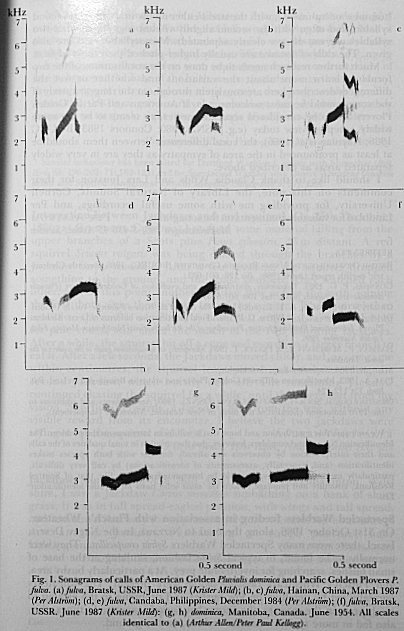
I did a crude rescaling of Per's table, to match the scale of
Keith's spectrographs; with a copy of the Fort Worth Plover above
and below, for comparison:

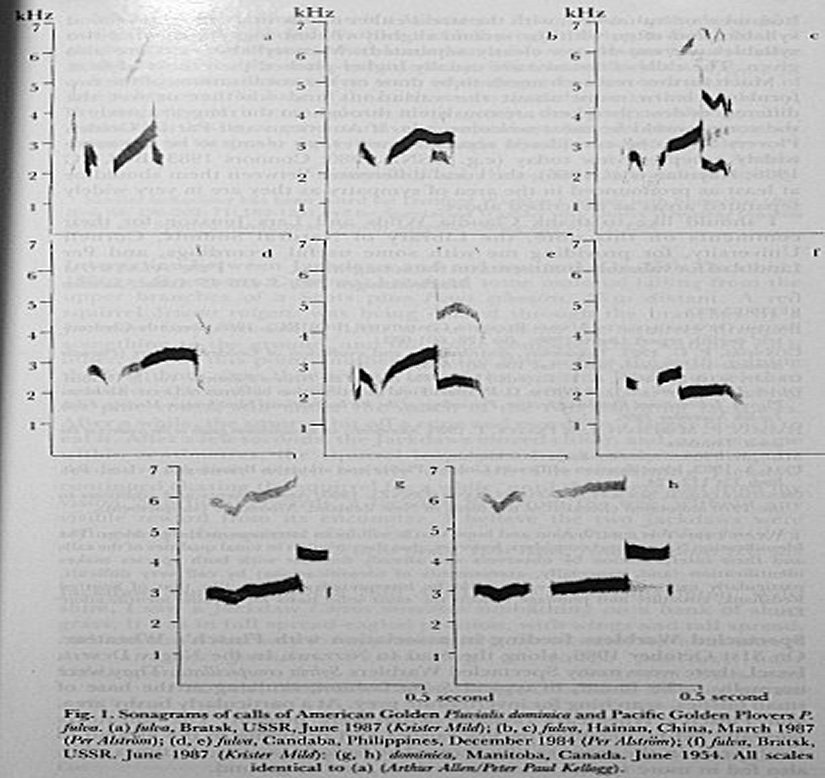

Note the striking similarity of the domincas in Per's table
to the one prepared by Keith (repeated here):

There is quite a bit of variation in the pattern of the fulvas
above, but a core theme runs through most of them - one that is
quite different from that of dominica. I feel that the
core theme of my recording of the FW falls comfortably within
that of the fulva graphs.